Surface Duo 2 Gives Android Clamshell 5G And A Big Spec Boost
Microsoft isn't giving up on dual-screen Android, with the Surface Duo 2 taking a second shot at the clamshell tablet. Now packing a 5G connection, and a more potent Qualcomm Snapdragon 888 chipset, the Surface Duo 2 promises a more usable, flexible upgrade to the original Surface Duo.
It's fair to say that device was a mixed bag. First impressions were positively glowing, with the idea of the Android OS and Microsoft's Office suite on a slimline, folding phone. While the Surface Duo may not have had the flexible OLED we now see on, say, a Galaxy Z Fold 3, Microsoft's customizations did at least make Google's platform reasonably functional on its twin screens.
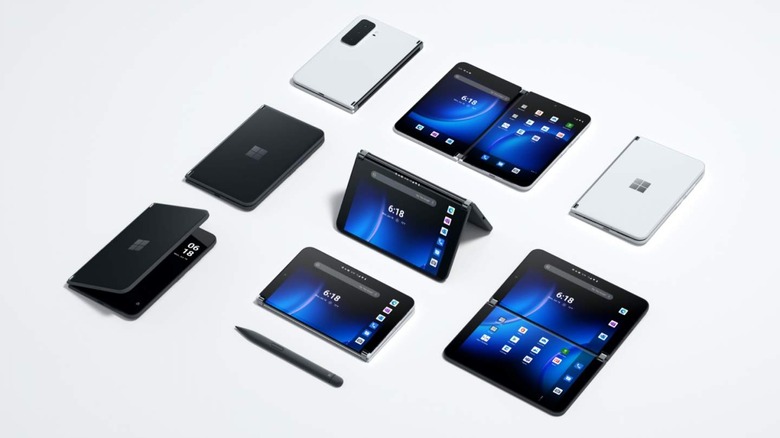
In practice, though, the reality wasn't quite so glowing. Mixed software support did the Surface Duo no favors, as did premium pricing at launch and an uncertainty as to whether the device was meant to be a small tablet, a large phone, or some hybrid of the two.
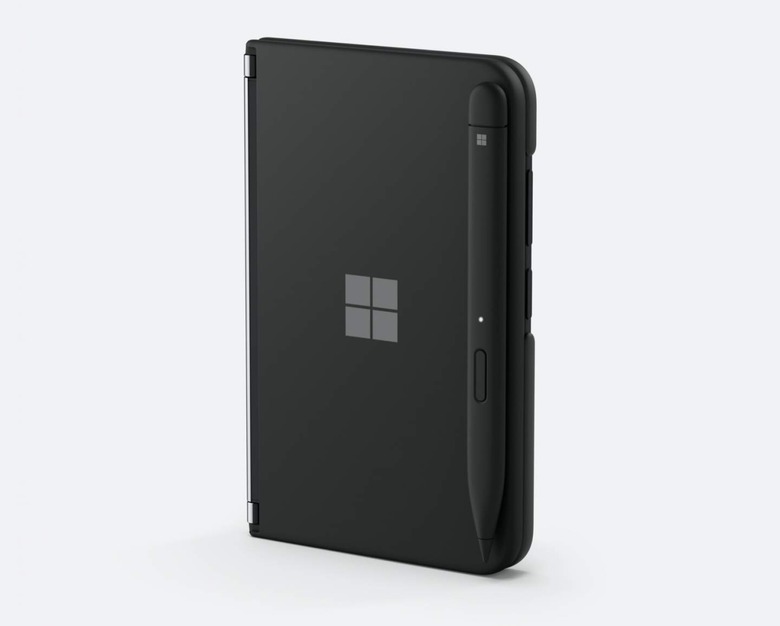
It's a question Microsoft isn't quite answering with the Surface Duo 2, though the general prospects seem better from the get-go. For a start, it's more powerful: the Snapdragon 888 5G chipset makes this the thinnest 5G mobile device available, Microsoft points out, even though there's both mmWave and Sub-6 GHz connectivity. Inside there's a pair of 5.8-inch PixelSense Fusion displays, which combine for an 8.3-inch panel in total.
That's a total of 2688 x 1892 resolution, with the AMOLED panels supporting HDR and the DCI-P3 color space. They have 90Hz adaptive refresh rates and 800 nits of maximum brightness; Microsoft protects them with Gorilla Glass Victus.
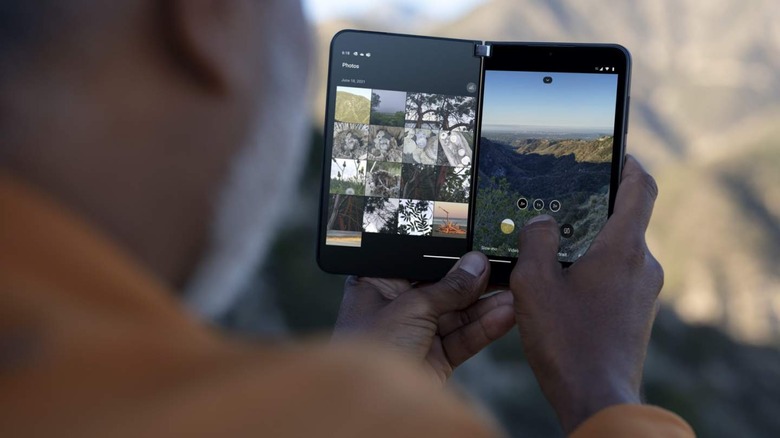
They're joined by the Revolutionary Hinge, with a Glance Bar in-between that lights up to show volume, charging, and other select icons and notifications. That makes the Surface Duo 2 a little more user-friendly even when it's closed. Shut, it's 11mm thick at the hinge, and 284 grams; open, it's a mere 5.5mm thick.
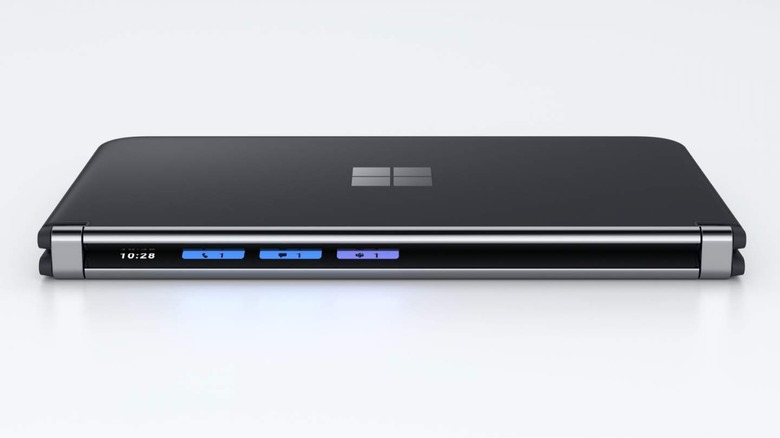
On the back there are three cameras in a protruding bulge. The primary wide camera has a 12-megapixel sensor with f/1.7 lens, dual pixel PDAF, and OIS. The 2x optical telephoto also has a 12-megapixel sensor, with f/2.4 aperture, PDAF, and OIS. Finally, the 16-megapixel ultra-wide has a 110-degree field of view, with distortion correction.
A 12-megapixel front camera takes care of selfies. For video, there's support for up to 4K 30/60 fps capture, with HDR. The Surface Duo 2 will also do slow-motion video at 120 or 240 fps.
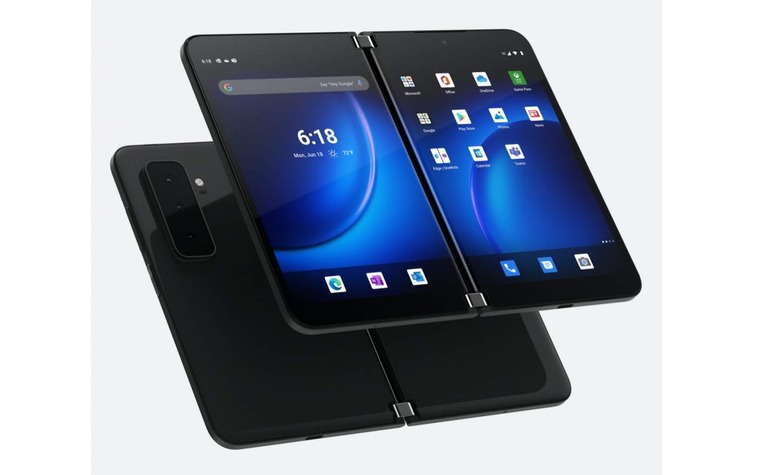
As for power, there's a 4,449 mAh dual battery, which supports 23W USB-C fast charging. Microsoft says to expect "all day battery life" or up to 15.5 hours of local video playback. If you're using the Surface Duo 2 for calls, you can expect up to 28 hours of talk time.
Along with the 5G, there's support for gigabit LTE, WiFi 6, Bluetooth 5.1, and NFC; a USB-C 3.2 Gen 2 port is on the bottom, supporting DisplayPort 4K with an HDMI adapter. In addition to a nano SIM, there's single eSIM support. Storage is either 128, 256, or 512 GB, and there's 8GB of memory. Microsoft even finds space for stereo speakers and dual microphones, plus a fingerprint sensor.
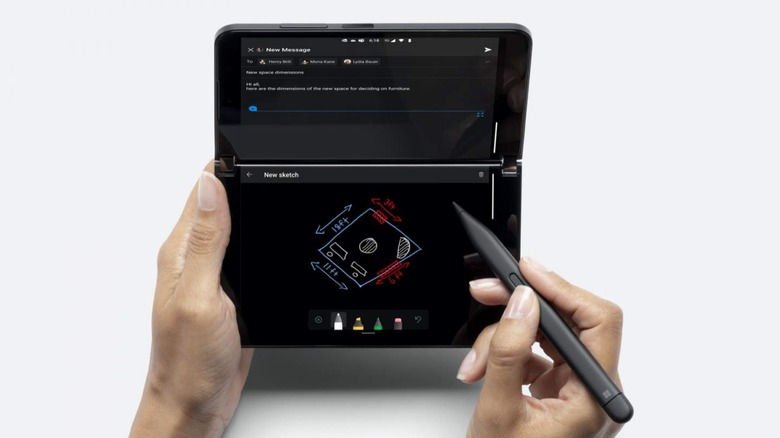
Android 11 is Microsoft's OS of choice, and there's support for various generations of stylus: the Surface Slim Pen, Surface Pen, and Surface Hub 2 Pen. It also supports the Surface Duo 2 Pen Cover. Two apps can run side by side, you can drag and drop between select apps, and organize clusters of software into App groups.
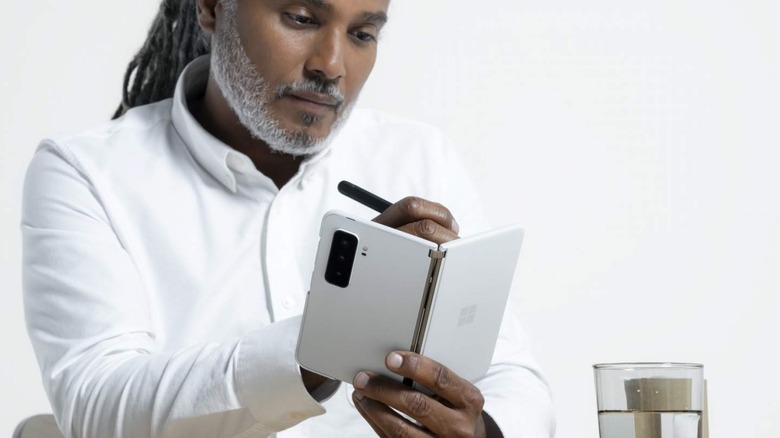
If there's a downside, it's that we're back to premium pricing. The Surface Duo 2 will go up for preorder today priced from $1,499, in a choice of Glacier white or Obsidian black.
